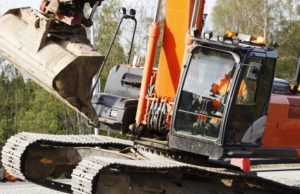

One consumer application: the sensors monitor the angle at which a mobile phone or tablet is held for the auto-rotate function to operate.
Position sensors are categorized according to the type of movement they detect. For example, linear sensors measure an object’s back and forth motion, while a tilt sensor detects the inclined displacement of an object.
Why are tilt sensors essential?
There are many popular applications of tilt sensors. Some of these are quite familiar too.
Vehicle security systems. In commercial aircraft, a tilt sensor gives information about the horizontal and vertical position of the aircraft. It helps the pilot avoid obstacles and choose the right maneuver during a flight. In other land-based vehicles, tilt sensors form part of the alarm system. When the vehicle suddenly moves or gets towed, the alarm will engage.
- Off-road vehicles. Off-road vehicles like tractors, tanks, and heavy-duty jeeps move over different types of challenging terrain. Moving over irregular and unexpected surfaces results in potentially hazardous conditions and accidents. A tilt sensor can signal the driver when the vehicle is close to tilting position. The sensor also provides the driver with information on the best course of action such as slowing down the speed or steering in a different direction to keep the vehicle moving in an upright position.
Handheld computers or tablets. Everyone is familiar with handheld computers and tablets which align automatically according to how you hold them. A tilt sensor is responsible for keeping the computer display in correct alignment regardless of how it is held.
- Gaming controllers. Another popular application of tilt sensors is in gaming controllers.
- High-speed trains. High-speed trains running on railway tracks may encounter bends and turns. Because of the train’s high speed, the gravitational force could cause it to tilt downwards. A tilt sensor signals when there is an incoming turn or bend so that the train can exert inertial force to counteract the effect of gravity and keep the train moving horizontally.
- Balancing a robot’s movement is an important consideration. To help a robot move independently and determine whether it needs to balance itself, a tilt sensor sends signals when the robot is inclined in the wrong direction.
Aside from these noteworthy applications of tilt sensors, they are also applied in industrial machines to aid with movement and alignment.
Tilt sensor specifications

- Sensor resolution
- Sensitivity
- Measurement range
- Number of axes
- Noise tolerance
- Sensitivity to vibration
- Type of output
Aside from these, there are other features to consider such as the effect of environmental conditions like extreme temperature and exposure to humidity. Some manufacturers may design tilt sensors with robust features using materials designed to work with harsh elements present.














